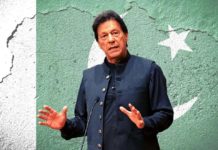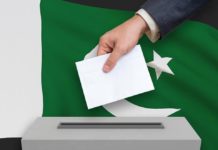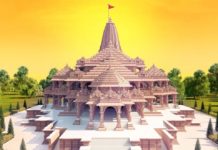Disclaimer: The Eqbal Ahmad Centre for Public Education (EACPE) encourages critical and independent thinking and believes in a free expression of one’s opinion. However, the views expressed in contributed articles are solely those of their respective authors and do not necessarily reflect the position or policy of the EACPE.
Seeking Identity was one of key factors that led to the partition of British India, where Hindu Muslim politics resulted in the formation of two separate states. Pakistan, a byproduct of colonial British India, was comprised of different racial and ethnic divides. Since its inception, the genesis of the “Identity crisis” among masses holds a pivotal stature. As Dr. James Chiriyankandath comments, “European export of mono-cultural nation-state left most postcolonial states with a dilemma of how to reconcile with ethnically and religiously diverse plural societies.” Dr. James comments explicitly illustrates the case of Pakistan where racial, ethnic, and sectarian divides have been indispensably evident. Despite all pervasive ethnic discontent in Pakistan less analytical work is available on this predicament of the country. Looking into historical writing about the phenomenon affirms the narrative of Foucault whom he called the users of history rather than analyzers.
The trouble of “Identity Crisis” in Pakistan has evolved since the day when Pakistan emerged as an independent state on the world map.
The trouble of “Identity Crisis” in Pakistan has evolved since the day when it emerged as an independent state on the world map. Being a feudal society, the kinship or ethnic ties were strong among people, the consolidation of North Frontier and Kalat state triggered ethnic elements among the people of these regions which resulted in the uprising of nationalist movements. Similarly, Bengalis were 54% of the total population but their total representation in military and civil services was just 11%. Being the largest ethnic group the imposition of Urdu as national language happened to be one of the fundamental factors which Bengalis were concerned about. The state structure was dominated by the Punjabi elites and Muhajirs, the ones who migrated from other states of India after partition. Muhajirs considered themselves to be the real founders of the state and held key positions in the state apparatus which bring implications to other ethnicities.
The other factor used in the state-building was the instrumental use of Islam “as a unifying myth that could hold the country together and act as the principal antidote to ethnic nationalism”. After the creation of Pakistan, the traditionalist ulemas took the advantage of the rhetoric echoed before partition that the state should be the Islamic one which leads towards sectarian politics as well as conflict which highly later penetrated into the Pakistani society which creates further problems for minorities in Pakistan. The religious and sectarian sentiments were also exploited by the ruling class for their vested interests. The Islamization of textbooks, rhetoric of Islamic ideology, and promotion of Wahabism need to be considered while analyzing the socio-political crisis. The power hunger among ruling classes further deepened the discontent of other ethnicities and they never tried to remove it.
In Pakistan, there is an absence of collective national identity. People feel proud to associate themselves to their respective ethnic identities as they feel a sameness and sense of security in doing it. But time and again, their ethnic identities have been exploited and not given any respect. Although the grievances are as old as the creation of Pakistan but racial, ethnic and other such discriminating factors still exist. For instance, the Pakhtoon, Sindhi and Baloch identity discrimination is evident in the textbooks, media and movies.
The trouble with Pakistan is its inability to define its identity in non-Indian terms and it has forced it into seeking an anti-Indian mould. Hence, Pakistanis trace their historical roots in non-Indian factions, especially the people of Punjab and those who migrated from India at the time of partition known as muhajirs are extremely antagonistic about Indian past and they disown the historical ties with India.
It was always the ruling elite who used the ethnic and sectarian divide for their gains and no sincere democratic efforts have been made on the state level to own these different nations and ethnicities.
Mr. Jinnah, the founder of the state was a critic of centralized state system based on the Government of India Act 1935 and termed it a “dangerous scheme”. But later after the creation of Pakistan, the act was made more centralized and more authoritarian with more arbitrary powers by insertion of Section 92A. Mr Jinnah’s unitary political system restricted the growth of the parliament system, which was suitable for the multi-ethnic society of Pakistan. Further, the predominance of the establishment not only retarded the political process but also adversely affected the ethnic composition of the state. In the name of national unity, we denied for too long the historical and sociological factor of ethnic diversity. When the ethnic discontent was growing, the ruling elite resorted to the methods centralizing and homogenizing strategies, instead of addressing regional grievances. Not only Urdu, the language of 3.7% of the population, was imposed as a national language but also Bengali legislators were warned to be tried for treason if they used their language. Such discriminatory policies triggered ethnic and regional protests. The rhetoric of an Islamic state, Islamism and Islamization further created a sectarian discourse in the state results in bloody violence. The racial and ethnic discrimination in textbooks, dramas, movies and media is a grave factor of emerging identity politics. Even a law was passed in 1975 prescribing a punishment of seven years imprisonment for people advocating the existence of more than one nationality in Pakistan.
The trouble with Pakistan is that the state power in the country is highly centralized. The people in Pakistan remain confused with the political forms of the Islam. The way text books are drafted and how history continues to be misinterpreted is creating dilemma of identity crisis. The process of single nation-building was possible in the newly formed state through a democratic process as many European non-nation states had done. In the case of Pakistan, coercive means used for unification of different nationalities and ethnic groups have further deepened the grievances. It was always the ruling elite who used the ethnic and sectarian divide for their gains and no sincere democratic efforts have been made on the state level to own these different nations and ethnicities.
About the writer

Abdul Nasir is pursuing an undergraduate degree in international relations at The Balochistan University of Information Technology, Engineering, and Management Sciences (BUITEMS), Pakistan.








